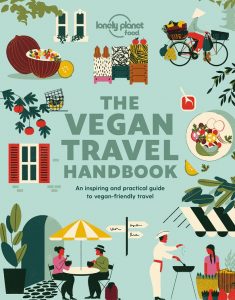This post is brought to you in partnership with PhotoBox, specialists in print photos, photo cards, photo books and canvas prints.

Travellers are always searching for new
destinations and unique experiences. While on the road, travellers are keen to
document their travels and record their moments through writing travel journals
and photography. Photos bring travel moments back to life, and there are many
ways for travellers to bring home quality images. I spoke to PhotoBox’s Search
Specialist and Company Events Photographer Bhavik Patel to find out more about
photography and garner some advice for travellers who need some helpful travel
photography hints before embarking on their journey.
“The price of good quality SLR cameras and
bridge camera has meant it’s now affordable to make more creative photos for
amateurs,” Bhavik confirms. “The use of social networks and the ability to
share photos a lot more easily than they could before have motivated people to
take more of an interest in photography.” Bhavik is right – photography has
heightened in popularity in recent years – and the travelling fraternity has
embraced the camera wholeheartedly. Words and journals will always be around
yet photography gives travellers a new way to be creative on the road. “I don’t
think it’s marked the end of words or journals, however it probably will create
a slow down with people writing more. Plus, it’s much easier for the majority
to be creative with a camera than it is with writing.” So how can travellers be
well-equipped and creative while clocking up the miles?
Buying the most suitable camera
“A first-time traveller should ask the
questions: ‘Where am I going? What type of scenery can I expect? Is it going to
be landscapes, cities or people?’ Once you narrow these questions down, it
should help you choose the ideal camera. If you’re going to be taking a
combination of different types of shots, e.g. heavy populated cities to
beautiful countryside, maybe buy a camera that will cater for all types of
shots or one that allows easy modification such as changing the lens to quickly
adapt. You should also think about how much you’re looking to spend on a camera
as that will help you narrow down the range. Don’t forget to ask yourself how
frequently you are going to use it after your travels.”
Don’t leave home without…
“A camera!” Bhavik laughs. “For me personally,
I wouldn’t leave home without my camera bag. If the camera is the samurai sword
then the bag is the scabbard. The last thing you want is for your camera to be
damaged by dropping it accidently, or getting water or dust in it. I’d also
carry enough memory cards – you want to be inspired for a shot and have the
memory to capture it.”
The benefit of good, natural light
“For landscape photos there’s no best time to
take a good photo as your camera should be able to cope with all different
levels of light. Taking photos in good light is slightly easier. Try to get as
much of what you’re trying to capture in focus and use a fairly small aperture.
This will reduce the amount of light to the sensor so make sure to increase
your shutter speed. Make sure you stay steady as the slower the shutter speed
the more likely your photo will be blurry. As for sunrises and sunsets, you
need to be a bit more creative. Have a play around with the shutter settings
and take a number of shots with different exposures. Don’t be afraid to take
hundreds of photos. It’s all about experience and experimenting.”
Capturing the movement in a moment
Capturing movement might seem daunting for a
beginner photographer. Yet, Bhavik assures wary travellers not to worry too
much. “If you’re completely new to photography, most cameras these days come
with sports settings which allow the capture of fast movements by increasing
the shutter speed. If you want to become a bit more adventurous, you can switch
to shutter priority mode and modify just the shutter speed and let your camera
take care of the other settings, i.e. aperture. If you don’t have the steadiest
of hands and holding the camera firmly isn’t working then you can always use a
tripod. It doesn’t have to be fancy and can be picked up fairly cheaply.”
People – the essence of culture
There are some simple ways to ensure people in
a scene can be captured effortlessly. “Whilst you want the person to be the
focal point of the shot, you don’t want them to dominate the picture so try to
capture them off-centre, using the rule of thirds. I try to capture shots of
people at their most natural. The natural shots are where you really capture a
person’s essence. Also, don’t use the flash unless you absolutely have to. The
flash can make a person’s skin look rough and leave a lot of shadows in the
photo. The person you’re capturing the photo for will be very grateful if the
flash is turned off.”
Transforming photos into works of art
Once home, travellers are tempted to transform
their new photos into photo books and canvas prints. Bhavik has some sound
advice for this. “What you must keep in mind is that for a canvas your image is
going to be blown up, including any imperfections. Make sure to shoot at the
highest resolution and maximise the size of the photo. This should prevent
pixilation of an image when blown up. In the case of photo books, it’s more
about having a good mixture of scenery and people. This way you can really
treasure the places and people you visited. If you follow all the tips that I
mentioned before, I guarantee you will have a great selection of photos to
choose from.”
Storing and protecting photos and equipment
“You should try to back your photos up on a
computer, external hard drive or cloud storage. Certain companies like PhotoBox
offer their users unlimited photo storage to ensure that no photos get lost
over the years. Camera equipment should be put away in a dry, safe place, e.g.
a bag in a cupboard, to prevent moisture or dust seeping in. Lenses should be
closed on both ends with the lens cap. Media cards should be kept in a
protective case usually provided with the card.”
Bhavik’s advice gives travellers the confidence
to build their photographic abilities for capturing quality photos from
incredible journeys. He has one small secret for budding travel
photographers out there: “Always be ready. Sometimes the perfect travel shot
just creeps up on you and you want to make sure you have your camera handy to
capture it.”




